80 Years of Fodor's Travel
Looking back on eight decades of making travel history.
Explore
1930s
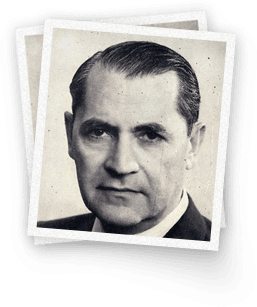
Eugene Fodor develops a love of travel
Hungarian-born Eugene Fodor works as a translator sailing around the world on French cruise ships. While on board, he becomes a travel correspondent, combining his own experiences and ship gossip.
Rome contains not only magnificent monuments and priceless art treasures, but also Italians.
Eugene Fodor's Introduction
To 1936 On The Continent
Fodor publishes the first modern guidebook
Fodor finds current travel guides old-fashioned and out of date, and publishes his own guidebook, written for British travelers: 1936 On the Continent: An Entertaining Travel Annual. He researched and wrote the 1,200-page tome himself. The guide went beyond reporting on the sights and for the first time included information about Europe's culture and people, practical information like how to tip, and was the first to be annually updated.

Eugene Fodor begins writing for American travelers
Fodor publishes his first guidebook for American tourists, 1937 in Europe, which sold out its entire first printing in just three days. The follow up, 1938 in Europe, hits the New York Times bestseller list.

Unease builds in Europe
Fodor is in the U.S. as tensions in Europe mount leading up to World War II. When the Munich Agreement is signed in 1938, he quits his job, declaring in a telegram that he will not return to Europe except in uniform.
Did You Know?
The 1930s are the “golden age” of the ocean liner. The last of the great ocean liners were all launched in the 1930s: Queen Mary was launched in 1934, the Europa in 1930, the Rex in 1932, and the Normandie in 1932.
In the U.S., the Chrysler Building (1930) and the Empire State Building (1931) ushered in a new era of skyscrapers.
During the Depression, FDR's New Deal initiatives lead to public projects that facilitated travel, including the Blue Ridge Parkway (1936), Great Smoky Mountains National Park (1934) and Shenandoah National Park (1935).
1940s
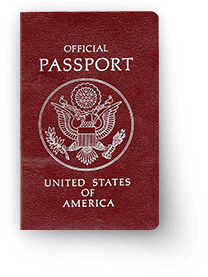
Eugene Fodor becomes a U.S. citizen
Fodor officially emigrates to the U.S. in 1942 and becomes a citizen.
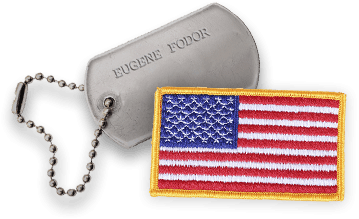
Eugene Fodor joins the U.S. military
During the height of World War II, Fodor is recruited for a special assignment by Colonel William Paley (founder of CBS) and General William “Wild Bill” Donovan, the head of the OSS. Fodor's army unit, named the First Mobile Radio Broadcasting Company, was designed to spread disinformation and undermine enemy morale through leaflets, radio broadcasts and the use of loudspeakers at the front.

Eugene Fodor helps liberate Pilsen
In 1945, Fodor leads an OSS team aiding General Patton in liberating the critical city of Plzen (Pilsen), Czechoslovakia from the Nazis.

After the war, Eugene Fodor returns to publishing
Fodor founds Fodor's Modern Guides in Paris in 1949, acting as his own printer, photographer and designer. He wanted to break from the idea of the grand tour of Europe, and was the first to produce guides to individual countries.
Early guides were written for American G.I.s
One of the first guides created by the fledgling company was a special low-priced edition geared towards American G.I.s in Germany—Europe's first post-war tourists.
Did You Know?
Technical advances and mass production result in commercial air travel becoming more popular by the beginning of the 1940s.
Los Angeles gains popularity as Hollywood becomes an escape from war.
Frank Sinatra makes Chicago a trendy destination with multiple songs about the city.
1950s
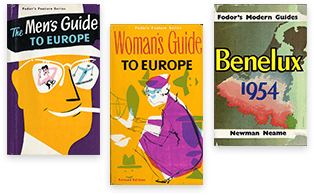
Tourism returns to Europe
By the mid-1950s, tourism in Europe was back in swing after World War II. Fodor traveled around Europe extensively during this time period, dining at the restaurants and staying at the hotels that his guides recommended.
I told them to make sure to send me real writers, not civil engineers. I wanted to get some writing out of them, and I did too.
Eugene Fodor
Eugene Fodor provides cover to counterintelligence agents
While stationed overseas during the Cold War, Fodor is approached by U.S. Intelligence to employ CIA operatives as Fodor's Travel writers.
Did You Know?
In 1952, the world's first ever jet airliner made its maiden flight from London to Johannesburg.
With more than 80% of all travel in the 1950s being done by car, the best way to get cross-country was by Route 66.
Visits to the national parks more than double in the 1950s, especially in iconic places like Yellowstone.
Havana is the Monte Carlo of the Caribbean in the 1950s.
1960s

Eugene Fodor returns to the U.S.
In 1964, Fodor moves to Litchfield, CT, setting up a publishing office in his barn.

Fodor's guides are a hit with travelers
More than 10 million Fodor's guides were published between 1950 and 1975. All books cost the same amount: $4.75.
Did You Know?
The first flight of the supersonic passenger jet airliner Concorde, which featured a maximum speed over twice the speed of sound, takes off in 1969.
Hyannis Port, Cape Cod, Martha's Vineyard and Nantucket all become popular due to Kennedy fame.
Swinging London and New York City's Greenwich Village become hotspots.
1970s
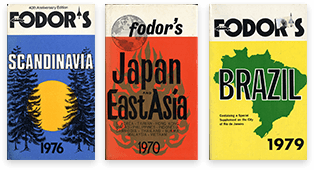
Fodor's local correspondents cover 100+ countries
By the mid 1970s, Fodor's Modern Guides employs more than 250 writers based all around the world, covering more than 100 countries.

Eugene Fodor's involvement with the CIA is revealed
In 1974, the New York Times reveals that CIA money was used to underwrite Fodor's travel guides in an interview with E. Howard Hunt, the infamous Watergate burglar. Concerned for relatives still in Eastern Europe, Fodor denies that he was an undercover agent and that the CIA helped to found and fund his organization.

Eugene Fodor named to Travel Hall of Fame
Along with William and Orville Wright, Eugene Fodor is inducted into the Travel Hall of Fame in 1978 (joining the likes of Charles Lindbergh and Neil Armstrong).
Did You Know?
The first high-speed train network debuts in France.
The Airline Deregulation Act of 1978 removes government control over fares, routes and new airlines, increasing air travel from the U.S. to places like Florida, Greece, Hawaii, and Spain.
Walt Disney World opens in 1971.
1980s
America is still a little-known and little-understood country, and we don't do much to promote ourselves abroad. We may need to go to Europe to visit our past, but the rest of the world comes to America to see their future.
Eugene Fodor
Eugene Fodor promotes U.S. tourism
Fodor embarks on a campaign to increase tourism to the U.S. and promote the benefits of travel outside the U.S.

Random House acquires Fodor's Modern Guides
The company is renamed Fodor's Travel in 1986.

Fodor's Travel guides undergo their first major redesign
Massimo Vignelli, the renowned graphic designer behind the famous Bloomingdale's and American Airlines logos, creates a new logo and covers for Fodor's Travel in 1988.
Did You Know?
Travel becomes easier when the first rolling carry-on was created by Northwest Airlines pilot Robert Plath who affixed wheels and a pull-out handle to a suitcase.
Cruise ship travel, especially to the Caribbean and Alaska, becomes increasingly popular.
Australia celebrates its bicentennial in 1988. Even with the long distance, the number of foreign visitors to grows rapidly.
1990s
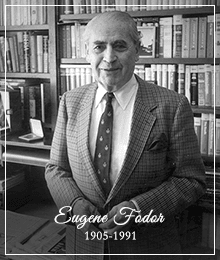
Remembering Eugene Fodor
Eugene Fodor passes away at the age of 85 on February 18, 1991.
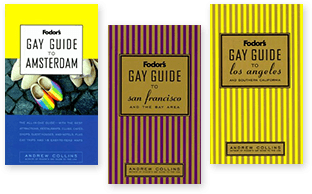
Fodor's Travel tailors guides to LGBTQ travelers
Fodor's Travel makes headlines with the first guidebook series targeted to gay travelers, introduced in 1996.
Did You Know?
The Berlin Wall came down in 1989 and the city becomes a travel destination again in the 1990s.
Online booking sites such as Travelocity, Expedia, Orbitz and dozens of others take off in the 90s – dramatically changing how travelers book their travel.
Increased disposable income results in an air travel boom; there are 800 airlines by the end of the decade and more than 22,000 flights a day.
2000s
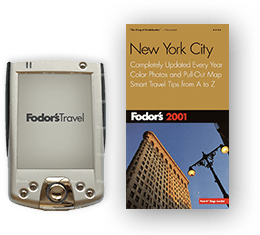
Fodor's Travel pioneers ebooks
Fodor's Travel publishes its first ebook in 2001, earning accolades for its digital New York City guide.

Fodor's local correspondents cover 7,500+ destinations
Fodor's employs more than 700 local writers who cover 7,500 destinations across the globe, providing travelers with local, insider information everywhere they go.

Fodor's travelers still love Europe
Fodor's travelers still love Europe as France and Italy are top destinations year after year. Paris, Rome and London are consistently some of the most popular destinations on Fodors.com and the top selling guidebook is Fodor's Italy.

Fodor's Travel carries on Eugene Fodor's legacy
Fodor's Travel continues to inspire travelers with initiatives like the annual Go List, Weekend Getaways itineraries, and new guides to hot destinations like Cuba and Brooklyn.
Did You Know?
While many thought grand ocean liners were things of the past, the Queen Mary 2, the largest, tallest, and longest ocean liner ever, was launched in 2004.
A flurry of luxury lodges open in South Africa from 2000-2005, upping the ante for safari goers.
While Airbnb was started in 2008, its popularity peaks a few years later and creates new lodging options for travelers.
Today
Our story continues with the latest travel destinations, news & features, and trip ideas to inspire your next getaway.
Fodor's Home